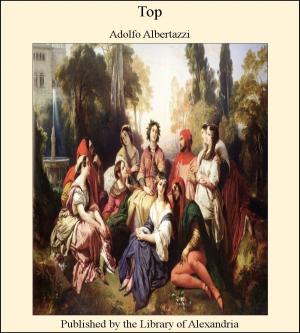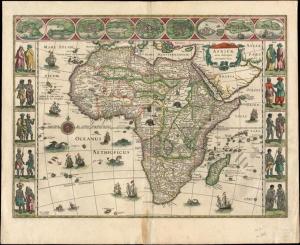| Author: | Hermann Jacobi | ISBN: | 9781465578235 |
| Publisher: | Library of Alexandria | Publication: | March 8, 2015 |
| Imprint: | Language: | English |
| Author: | Hermann Jacobi |
| ISBN: | 9781465578235 |
| Publisher: | Library of Alexandria |
| Publication: | March 8, 2015 |
| Imprint: | |
| Language: | English |
TEN years have elapsed since the first part of my translation of Gaina Sûtras appeared. During that decennium many and very important additions to our knowledge of Gainism and its history have been made by a small number of excellent scholars. The text of the canonical books, together with good commentaries in Sanskrit and Guzeratî, has been made accessible in fair editions published by native scholars in India. Critical editions of two of them have been published by Professors Leumann 1 and Hoernle 2; and the latter scholar has added a careful translation and ample illustrations to his edition of the text. A general survey of the whole Gaina literature has been given by Professor Weber in his catalogue of the Berlin Manuscripts 3 and in his learned treatise 4 on the sacred literature of the Gainas. The development of Gaina learning and science has been studied by Professor Leumann, and some Gaina legends and their relations to those of the Brahmans and Buddhists have been investigated by the same scholar 5. An important document for our knowledge of the old history of the Svêtâmbara sect has been edited by myself 1, and the history of some of their Gakkhas has been made known from their lists of teachers by Hoernle and Klatt. The last-named scholar, whom we have all but lost by this time, has prepared a biographical dictionary of all Gaina writers and historical persons, and he has issued specimens of this great Onomasticon, while Hofrat Bühler has written a detailed biography of the famous encyclopaedist Hêmakandra 2. The same scholar has deciphered the ancient inscriptions, and discussed the sculptures excavated by Dr. Führer at Mathurâ 3, and the important inscriptions at Sravana Belgola have been edited by Mr. Lewis Rice 4; M. A. Barth has reviewed our knowledge of Gainism 5, and likewise Bühler in a short paper 6. Lastly Bhandarkar has given a most valuable sketch of the whole of Gainism 7. All these additions to our knowledge of Gainism (and I have but mentioned the most remarkable ones) have shed so much clear light on the whole subject that little room is left now for mere guesswork, and the true historical and philological method can be applied to all its parts. Still some of the principal problems require elucidation, while the proffered solution of others is not accepted by all scholars. I, therefore, gladly avail myself of this opportunity to discuss some of the disputed points, for the settling of which the works translated in this volume offer valuable materials. It is now admitted by all that Nâtaputta (Gñâtriputra), who is commonly called Mahâvîra or Vardhamâna, was a contemporary of Buddha; and that the Niganthas 8 (Nirgranthas), now better known under the name of Gainas or Ârhatas, already existed as an important sect at the time when the Buddhist church was being founded. But it is still open to doubt whether the religion of the early Nirgranthas was essentially the same as that taught in the canonical and other books of the present Gainas, or underwent a great change up to the time of the composition of the Siddhânta. In order to come nearer the solution of this question, it may be desirable to collect from the published Buddhist works, as the oldest witnesses we can summon, all available information about the Niganthas, their doctrines and religious practices.
TEN years have elapsed since the first part of my translation of Gaina Sûtras appeared. During that decennium many and very important additions to our knowledge of Gainism and its history have been made by a small number of excellent scholars. The text of the canonical books, together with good commentaries in Sanskrit and Guzeratî, has been made accessible in fair editions published by native scholars in India. Critical editions of two of them have been published by Professors Leumann 1 and Hoernle 2; and the latter scholar has added a careful translation and ample illustrations to his edition of the text. A general survey of the whole Gaina literature has been given by Professor Weber in his catalogue of the Berlin Manuscripts 3 and in his learned treatise 4 on the sacred literature of the Gainas. The development of Gaina learning and science has been studied by Professor Leumann, and some Gaina legends and their relations to those of the Brahmans and Buddhists have been investigated by the same scholar 5. An important document for our knowledge of the old history of the Svêtâmbara sect has been edited by myself 1, and the history of some of their Gakkhas has been made known from their lists of teachers by Hoernle and Klatt. The last-named scholar, whom we have all but lost by this time, has prepared a biographical dictionary of all Gaina writers and historical persons, and he has issued specimens of this great Onomasticon, while Hofrat Bühler has written a detailed biography of the famous encyclopaedist Hêmakandra 2. The same scholar has deciphered the ancient inscriptions, and discussed the sculptures excavated by Dr. Führer at Mathurâ 3, and the important inscriptions at Sravana Belgola have been edited by Mr. Lewis Rice 4; M. A. Barth has reviewed our knowledge of Gainism 5, and likewise Bühler in a short paper 6. Lastly Bhandarkar has given a most valuable sketch of the whole of Gainism 7. All these additions to our knowledge of Gainism (and I have but mentioned the most remarkable ones) have shed so much clear light on the whole subject that little room is left now for mere guesswork, and the true historical and philological method can be applied to all its parts. Still some of the principal problems require elucidation, while the proffered solution of others is not accepted by all scholars. I, therefore, gladly avail myself of this opportunity to discuss some of the disputed points, for the settling of which the works translated in this volume offer valuable materials. It is now admitted by all that Nâtaputta (Gñâtriputra), who is commonly called Mahâvîra or Vardhamâna, was a contemporary of Buddha; and that the Niganthas 8 (Nirgranthas), now better known under the name of Gainas or Ârhatas, already existed as an important sect at the time when the Buddhist church was being founded. But it is still open to doubt whether the religion of the early Nirgranthas was essentially the same as that taught in the canonical and other books of the present Gainas, or underwent a great change up to the time of the composition of the Siddhânta. In order to come nearer the solution of this question, it may be desirable to collect from the published Buddhist works, as the oldest witnesses we can summon, all available information about the Niganthas, their doctrines and religious practices.















